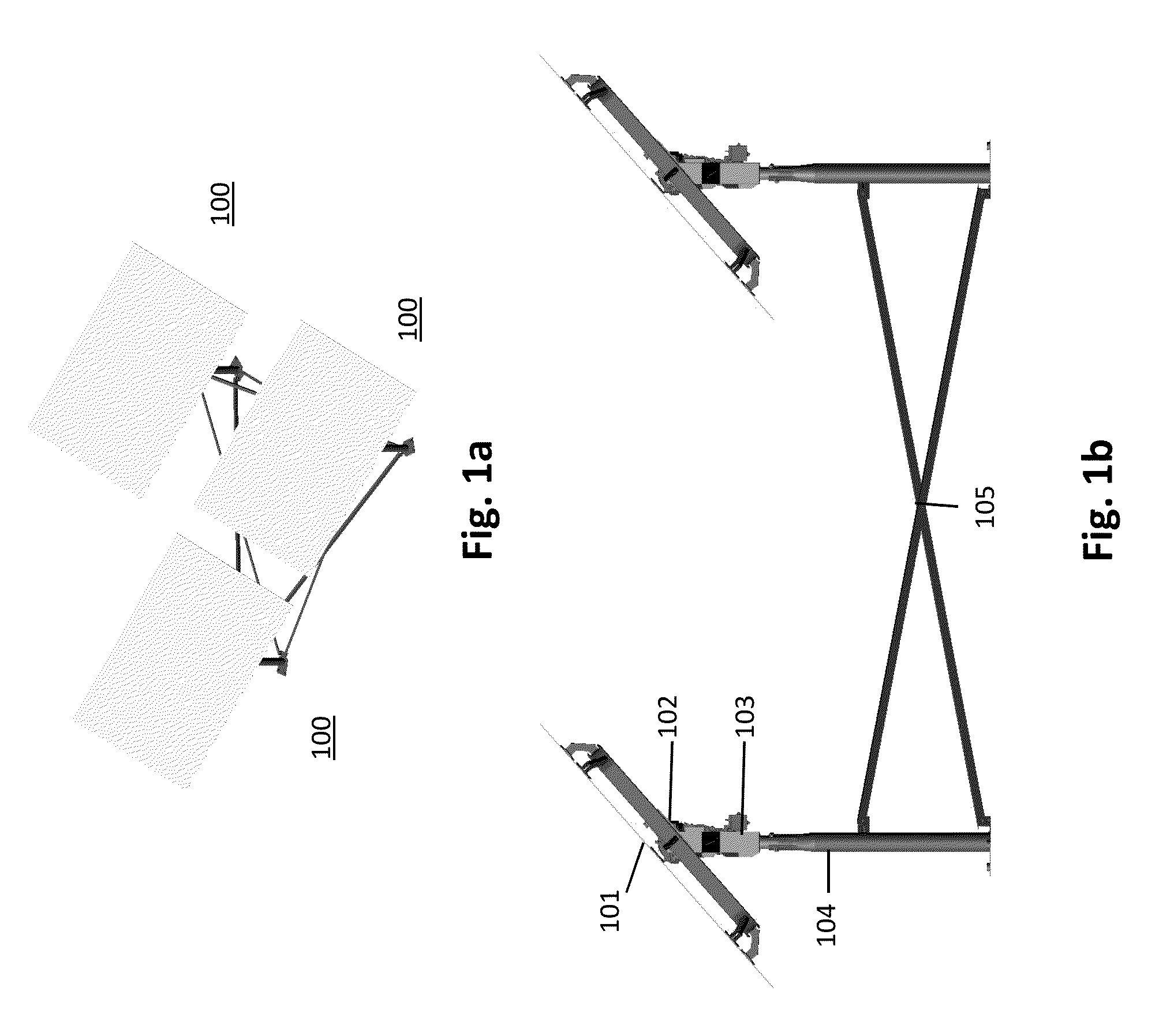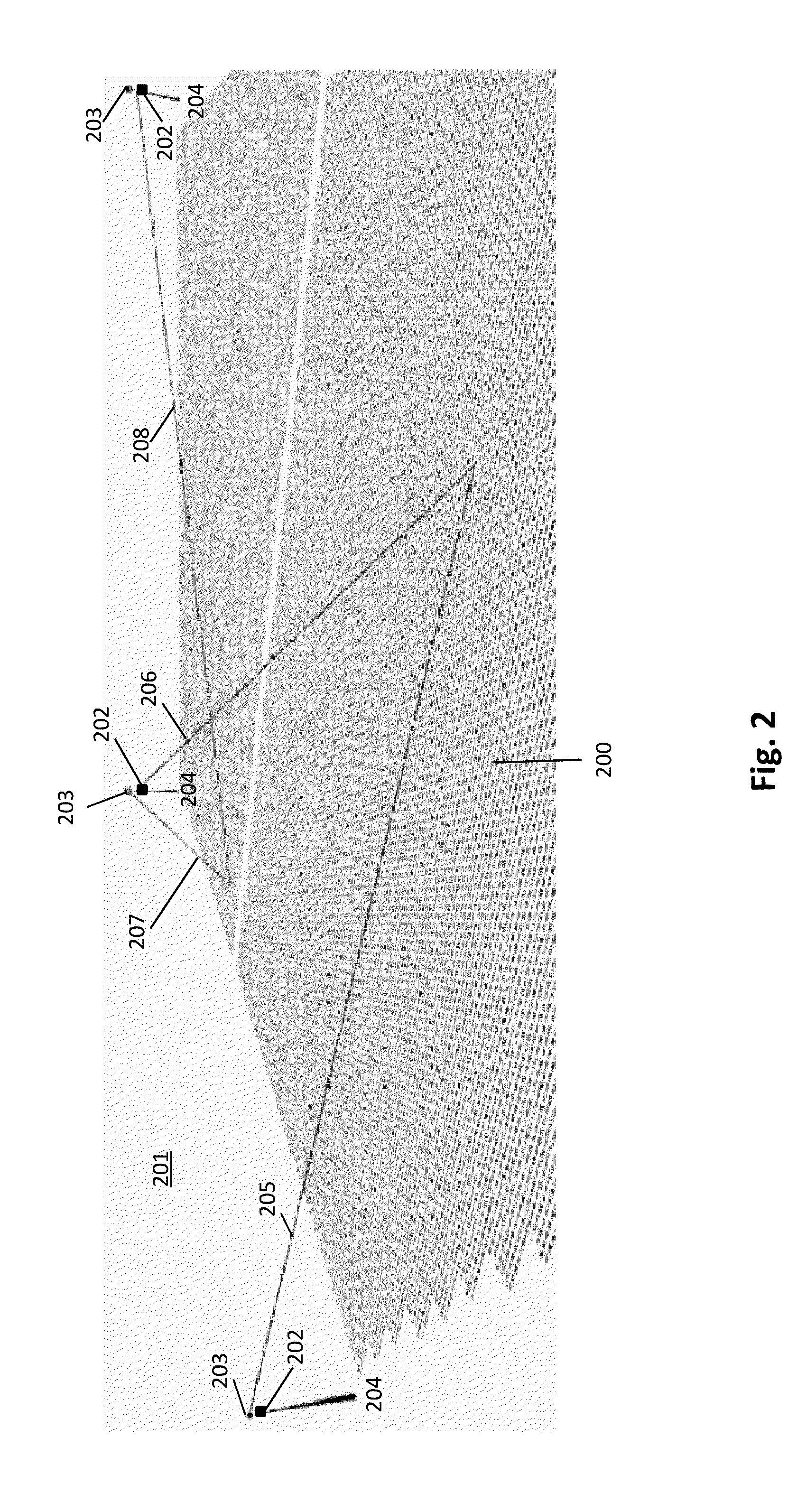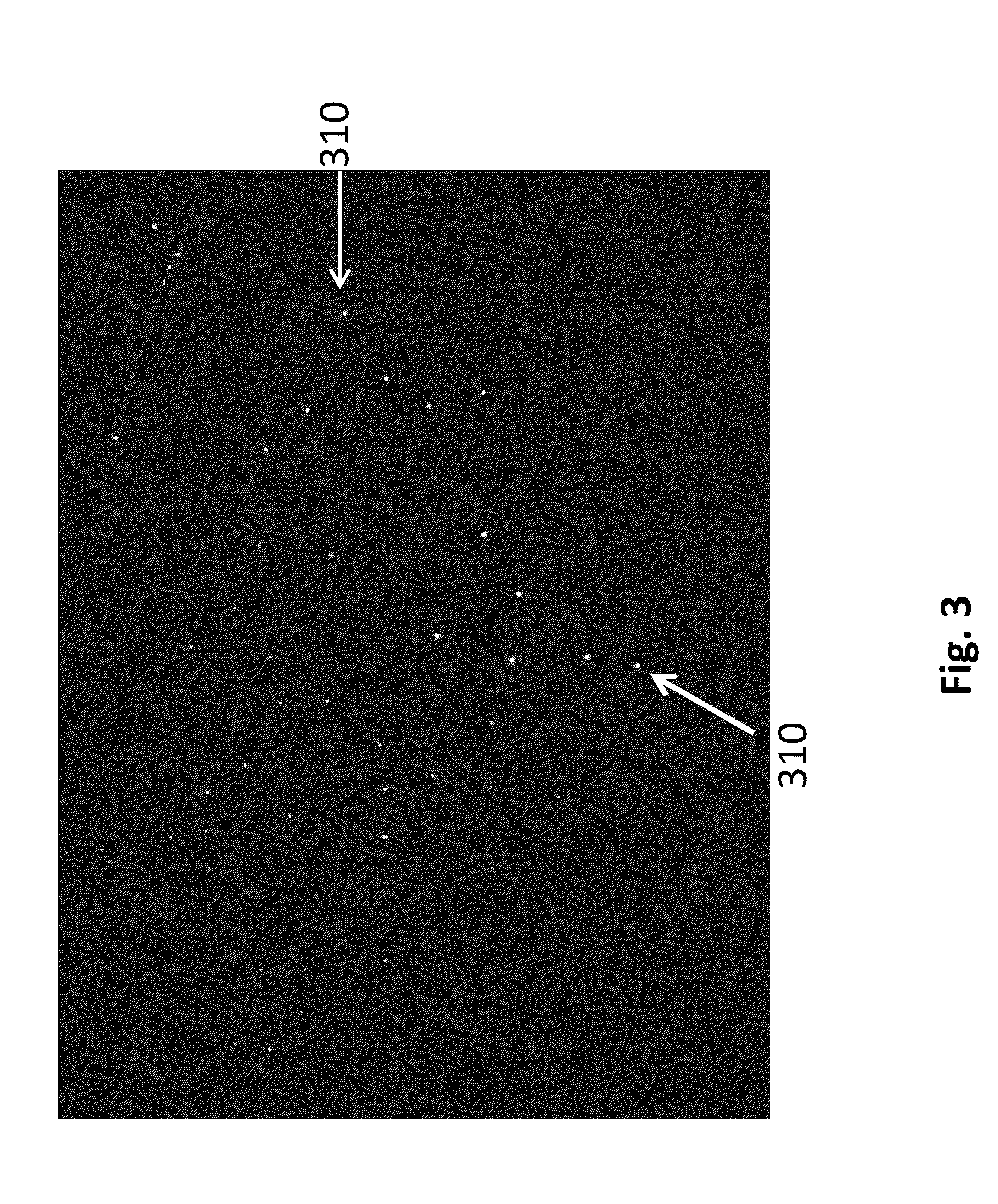System and Method for Detecting Heliostat Failures Using Artificial Light Sources
a technology of artificial light source and heliostat, which is applied in the safety of solar heat collectors, instruments, lighting and heating apparatus, etc., can solve the problems of motor malfunction, decrement of the average field availability, and inability to reliably reflect sunlight onto the receiver, etc., to achieve the effect of facilitating rapid replacement and restoration and higher degree of parallel data collection
- Summary
- Abstract
- Description
- Claims
- Application Information
AI Technical Summary
Benefits of technology
Problems solved by technology
Method used
Image
Examples
first embodiment
[0041]FIG. 5 displays a flowchart 501 detailing the steps of a method of detecting heliostat failures according to the present invention. The method comprises two phases: a commissioning phase 502 and a monitoring phase 503. The commissioning phase 502 comprises the following steps:[0042]a) Calibrate the heliostat and define characterization function parameters (510). A heliostat may be calibrated by any process that estimates the parameters necessary for it to continuously reflect sunlight onto a receiver tower under open-loop control. For example, a heliostat may be actuated so as to produce a reflection of a given light source in such a way that it is detectable by a given camera, and the control system may record information related to the heliostat's angular orientation at which one or more such reflections were produced, such as the step positions of the motors, as well as the time at which such a reflection occurred, the sun's current position, and other environmental conditi...
second embodiment
[0067]In a second embodiment, scheduling of heliostat spot-check tests may be performed adaptively. Adaptive scheduling involves running spot-check tests of varying duration. In this embodiment, heliostats may be selected for failure mode detection testing based on an objective function, subject to the constraint that no two simultaneous spot checks may interfere with one another. The objective function may prioritize, for example, heliostats which have a higher assumed likelihood of failure. Spot-check tests are performed on subsequent sets of heliostats until they are completed, regardless of duration. The data collection rate may be dynamically controlled based on other plant activities or constraints. For example, if heliostat motion results in higher-than-desired power consumption due to motor actuation, the number of heliostats that are scheduled for spot-check tests during a given time may be throttled to a lower amount. As with deterministic scheduling, heliostats may be que...
PUM
| Property | Measurement | Unit |
|---|---|---|
| colors | aaaaa | aaaaa |
| density | aaaaa | aaaaa |
| frequency | aaaaa | aaaaa |
Abstract
Description
Claims
Application Information
 Login to View More
Login to View More - R&D
- Intellectual Property
- Life Sciences
- Materials
- Tech Scout
- Unparalleled Data Quality
- Higher Quality Content
- 60% Fewer Hallucinations
Browse by: Latest US Patents, China's latest patents, Technical Efficacy Thesaurus, Application Domain, Technology Topic, Popular Technical Reports.
© 2025 PatSnap. All rights reserved.Legal|Privacy policy|Modern Slavery Act Transparency Statement|Sitemap|About US| Contact US: help@patsnap.com



